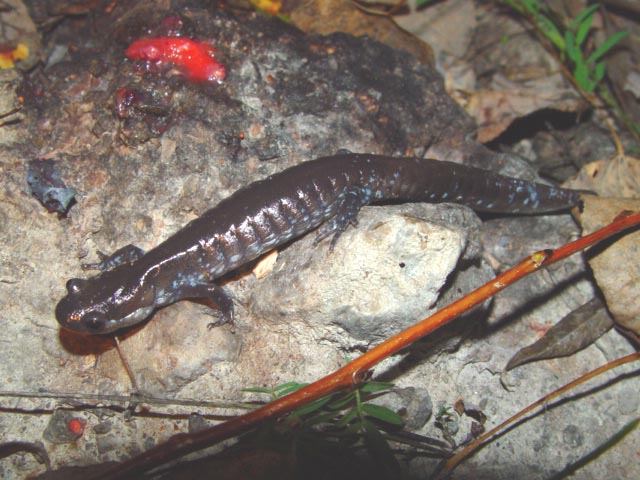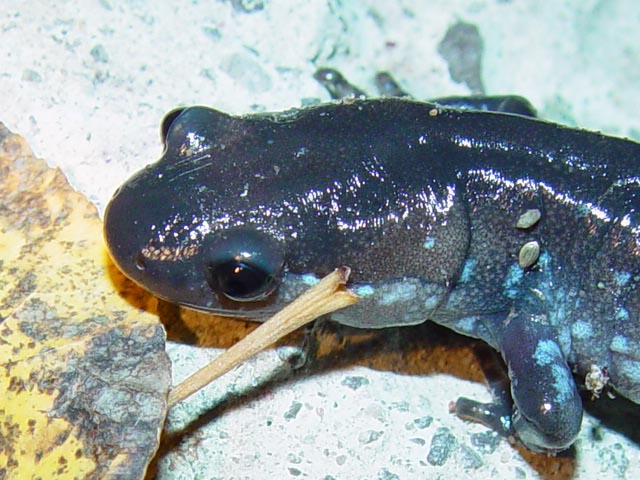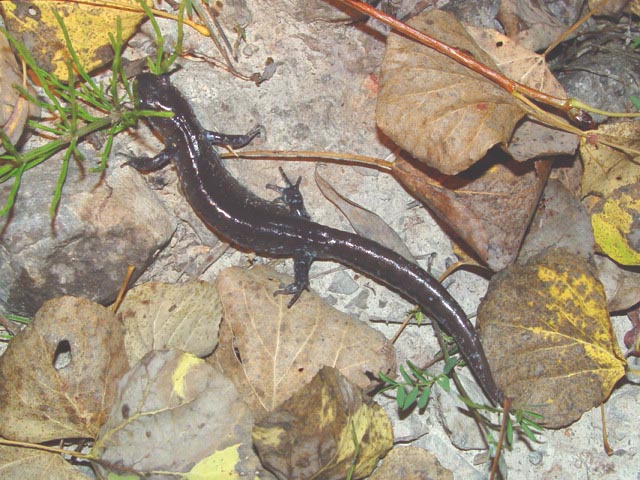Tim Dyson: Night Vision Photography

Ambystoma laterale, September 25,
Peterborough, Ontario, courtesy of Tim Dyson
copyright.

They are the most abundant salamander we have around here. You'll notice in some of the pics, that there is freshly spilled moth bait on top of, or near old moth bait. I think this salamander is probably attracted to tiny little creatures (slugs perhaps), that come along the ground to eat the spilled bait."


The Blue-spotted Salamander belongs to a group of subterranean salamanders called "mole salamanders". As adults they live along the forest floor under fallen leaves, rocks and logs.
They return to the water, usually in March-April, to breed in ponds and even in temporary water bodies.
Egg masses of about a dozen ferilized eggs are attached to submerged debris. One female can lay up to 500 eggs in a single season.
Newly transformed larvae have yellow spots that turn blue after they leave their water habitat. The blue-spots on young salamanders are usually more intense and numerous, often decorating the backs as well as on the sides of these amphibians. Occasionally, melanistic specimens are found.
The diet consists of spiders, centipedes, slugs and earthworms.
The Blue-spotted Salamander has two defense mechanisms:
1)
when disturbed, it lashes its tail back and forth and secretes a
noxious substance from glands at the base of its tail.
2) its tail will also break loose in the grasp of a would-be-
predator, allowing the salamader to scurry away and grow a new tail.
They have four toes on the front feet and five toes on the hind feet.
Tim is encountering many night creatures along the trail. It is interesting, almost chilling, how they often fit into each others' food chain.
I suspect owls and mice and toads would prey on these beauties.
Use your browser "Back" button to return to the previous page.